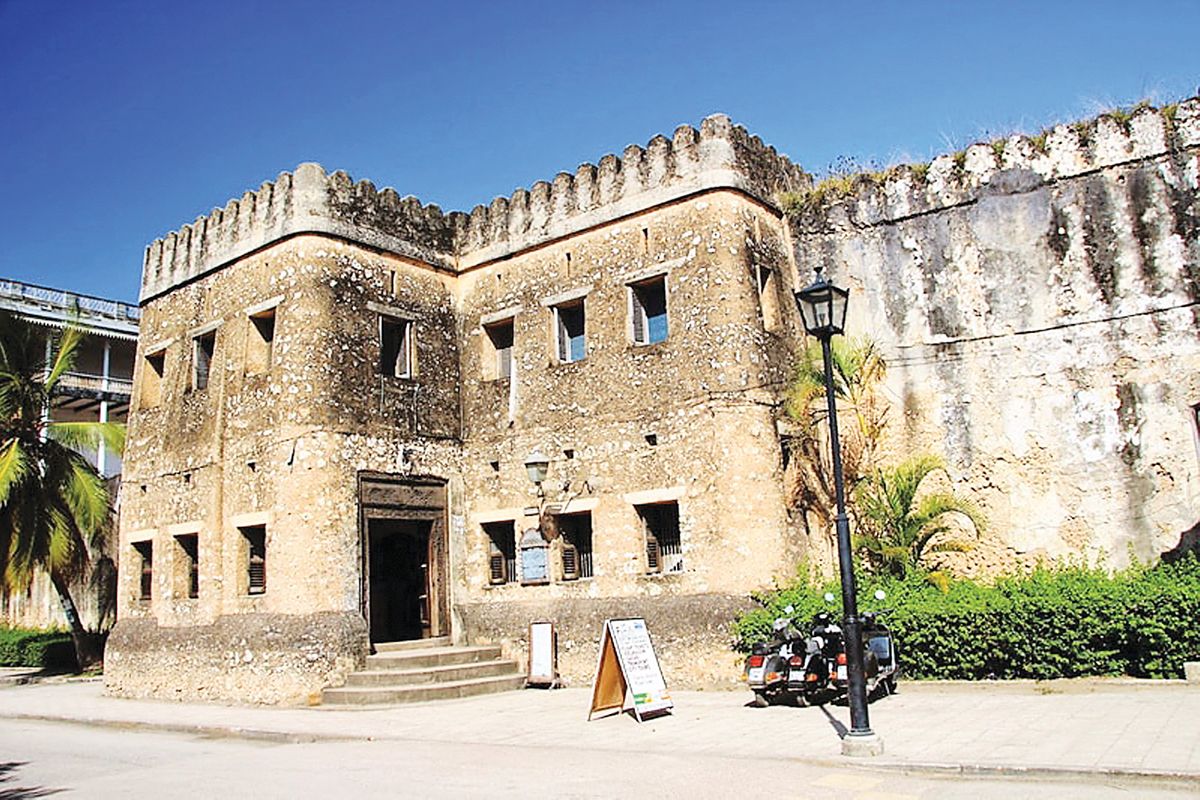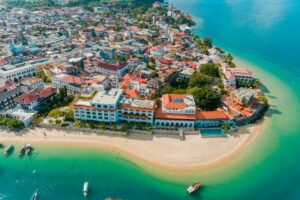
Unguja. The Old Fort (Ngome Kongwe) of Zanzibar, a centuries-old monument and a key symbol of the island’s rich cultural heritage, is transforming what will make it a premier cultural destination.
Once constructed by the Portuguese in the 17th century and later reconstructed by the Omanis in the 18th century, the fort has become an integral part of Zanzibar’s identity and a must-see for tourists.
Infinity Group, in partnership with the government of Zanzibar, in 2024, announced plans to restore the Old Fort, a plan that has sparked a heated debate, polarising opinion from various stakeholders who fear that the planned changes could alter the aesthetics of the fort’s historical character and its role in the island’s cultural landscape.
The vision for the Old Fort
The planned restorations, according to Infinity, aim to restore the Old Fort while ensuring to preservation its historical essence.
Speaking to The Citizen, Infinity said they envision transforming the site into a vibrant cultural and historical hub, where visitors will be able to learn more about the rich history of Zanzibar, while also being able to experience local music, art, and culture.
The goal is to create a fusion between the preservation, and restoration of the Old Fort, as well as to help create an elevated culturally rich learning experience about the rich history of Zanzibar, while not compromising on anything that would endanger the archaeological significance of the project.
The developer said they have engaged all the respective parties, including the Government of Zanzibar, and Unesco in their works to ensure that it complies with all of their guidelines.
Mr Samuel Saba, chairman of Infinity Group, when asked to comment, highlighted that Infinity understands the importance of preserving the fort’s historical significance by ensuring that they follow all of the preservation guidelines that have been set throughout the transformation process by all of the concerned institutions.
“We consider ourselves very honoured and grateful to have been entrusted with the opportunity to partner together with the Government of Zanzibar in the restoration of this historically significant project on the island.”
Scepticism about the project
Despite the reassurances from the Developer about the preservation of the Old Fort, it has sparked scepticism from others who are concerned about the methods being used for the preservation.
Parmuk Singh, a former Member of Parliament, voiced his concerns about the potential loss of the fort’s original charm, particularly the proposed use of white and grey cement, which he argues would disrupt the unique architectural identity of Stone Town. “The fort’s walls, made with original materials that have survived centuries, should not be plastered over,” Singh said. “This redevelopment risks changing the historic fabric of the fort and could ultimately discourage tourists who come to Zanzibar for its authentic, multicultural architecture.”
However, the developers say they are committed to restoration and preservation guidelines set forth by Unesco and the government.
“Infinity has documented the processes that it has undertaken for the restoration works, and we can assure the general public and any other concerned stakeholder that there is no use of cement, or any other material which goes against the guidelines set forth which we must adhere to that have been set forth by the concerned institutions.”
Apparently, this is not the first time that there has been an attempt to transform the Old Fort. Documents that The Citizen has obtained from Ajit Singh’s archives reveal that in 1938, during the British administration, a team of architects proposed a plan to redevelop the Old Fort into a five-star hotel, with the four towers repurposed as suites. However, this plan was abandoned following the outbreak of the Second World War, as funds were redirected to more urgent priorities.
One of the significant alterations to the Fort during this period occurred in 1945, when the Ladies Club was added, which now serves as the entrance and reception area of the Fort. An archaeologist has also raised some concerns. Prof Mark Horton from the Royal Agricultural University in The UK suggested that the planned redevelopment could potentially destroy historical evidence.
“The Old Fort is one of the most significant archaeological sites in Zanzibar. We have uncovered artefacts from the Shirazi period, as well as evidence of the Portuguese cathedral that once stood here. These findings tell the story of Zanzibar’s past, and any development could erase these critical links to history,” he said. Prof Horton’s excavations in 2022 revealed remains from as early as the 10th century, including glass, ceramics, and coins from Persia, which suggest that Stone Town is even older than previously thought.
“When the Portuguese arrived in the 16th century, they chose the site of the Old Fort to construct their monastery. What we have uncovered is the remains of a cathedral, whose plan still survives at roof height along the northern wall of the Fort—the original wall of the structure. This cathedral was one of the largest churches built in Sub-Saharan Africa before the 19th century, and the wall of the cathedral is still part of the Old Fort today,” he says.
He adds: Additionally, we discovered that the Portuguese buried their dead inside the church, with approximately 100 bodies found. In one small area, we excavated, we uncovered 20 bodies. Some of these were martyrs from the 17th-century Jihad. We also found various pieces of Christian jewellery.
He pointed out that the Old Fort’s status as an archaeological site is invaluable and should be protected from commercial interests, because if lost and if it is lost to commercial development, ‘we may never fully uncover or tell its true story’.
However, the developers say that all of the structures which are being installed are being built in a non-invasive, and non-permanent method where future archaeological works will be able to take place without being compromised.
The impact on local traders and the cultural scene
Another group who have also voiced their opinion of the redevelopment plans are the traders who are currently operating within the Old Fort.
Ahmed, a trader who has had a stall in the fort since 1996, expressed his concern about being relocated within Stone Town.
“Tourists who visit us here will likely not make it to the new location. The rents at the Caravan Sarai are also likely to be higher, making it difficult for many of us to afford,” Ahmed said.
The impact of the redevelopment on Zanzibar’s cultural scene is another point of contention. Mariam Hamdan, a well-known artist and former chairperson of the Copyright Society of Zanzibar (Cosoza), emphasised the importance of the Old Fort for local performers.
“For artists like me, the Old Fort has been a vital venue for showcasing our work,” Ms Hamdan said. “With the disappearance of venues like Khalifa Hall, the fort is one of the few places left where we can perform for large audiences. If the fort is redeveloped and turned into a commercial space, where will we perform?”
According to Infinity, the Fort will still have an amphitheatre and its visitors will still be able to listen to live local musicians and performers throughout the day.
As the conversation continues, it remains clear that finding a balance between preserving Zanzibar’s historical heritage and embracing progress is a delicate challenge. While the developer is focusing on creating a modern, accessible space for tourism, sceptics argue that this should not be done in a way that does not compromise the fort’s cultural and historical value.
Observers say Zanzibar’s rich history and vibrant culture must be preserved for future generations, but the question remains: How can development and preservation coexist without erasing what makes the island unique?














